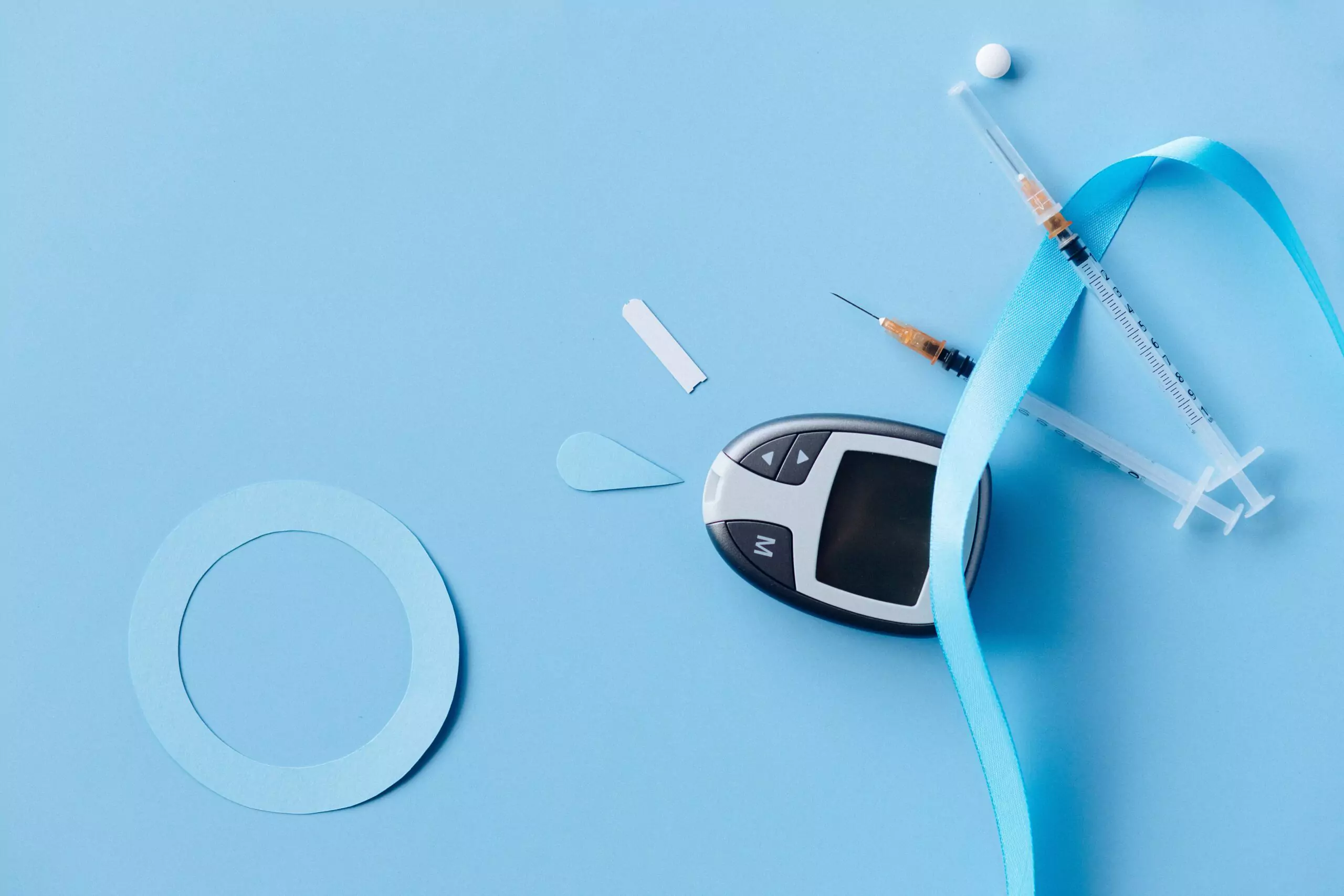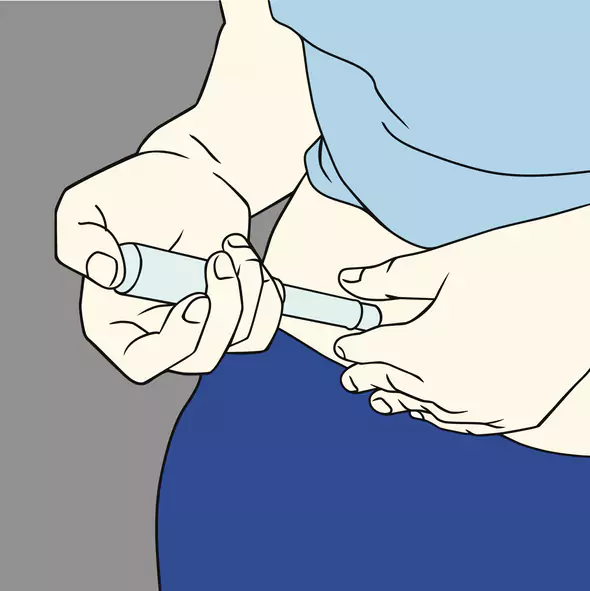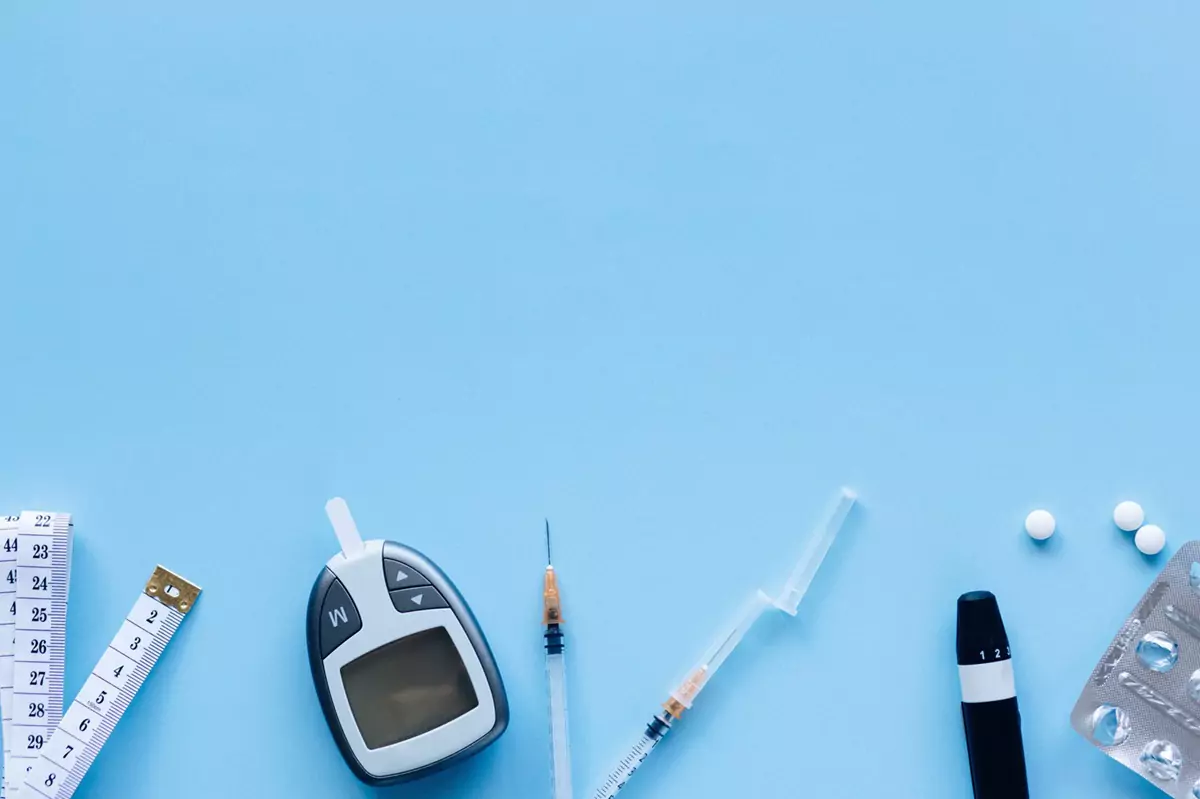





13 Humalog Side Effects: Common, Mild and Serious


Table of Contents
- Common Side Effects of Humalog
- Headache
- Nausea
- Diarrhea
- Vomiting
- Hypoglycemia
- Mild Side Effects of Humalog
- Weight gain
- Indigestion and Burping
- Constipation
- Rash
- Injection Site Reactions
- Serious Side Effects of Humalog
- Swelling of Your Hands and Feet
- Severe Hypoglycemia
- Make Heart Failure Worse
- Frequently Asked Questions about Humalog
- Humalog and Weightloss - Are they connected?
- Humalog and Fatigue - Are they connected?
- Humalog and Hair loss - Are they connected?
- Humalog and Burping - Are they connected?
- Humalog and Joint Pain - Are they connected?
- Conclusion
- About The Author
Humalog is a form of insulin that is used to help control blood sugar levels. While this medication does aid in controlling blood sugar levels, it can also bring about some side effects. In this article, we will discuss 13 side effects of Humalog but before that, let’s have an overview of what is Humalog. The active ingredient in Humalog is insulin lispro, a rapid-acting form of insulin that helps regulate blood sugar levels.
It is usually injected under the skin and is used in both type 1 and type 2 diabetes. It can help keep blood sugar levels within a healthy range when taken as directed. It is important to follow your doctor’s instructions for taking Humalog and monitor your blood sugar levels regularly to ensure that the medication works properly.
Common Side Effects of Humalog
Humalog is a brand of fast-acting insulin used to help regulate the level of glucose in the blood, which is essential for managing diabetes. It helps to lower blood sugar levels in adults and children with type 1 and type 2 diabetes, but as with all medications, there may be side effects. The most common side effects are:
Headache
Headache is one of the most common side effects of Humalog insulin. In some cases, the headache may be mild and short-lasting. In other cases, it can be severe and persistent. People with pre-existing migraine headaches may be more likely to experience headaches as a result of Humalog insulin use. Headaches may start at any time during Humalog insulin use.
The pain may be located in the back of the head, the forehead, or around the eyes. In conclusion, headache is one of the most common side effects of Humalog insulin. It is important to monitor the severity of your headaches and inform your diabetes doctor if they become disabling. If needed, your doctor may suggest changes to your insulin dosage or other treatments to reduce the frequency and severity of your headaches.
Nausea
Nausea is one of the common side effects associated with Humalog insulin. This is fast-acting insulin and can be taken before meals to help control the levels of glucose in the blood. However, nausea is one of the potential side effects, and those who take Humalog insulin should be aware of it. Nausea is usually mild and usually occurs shortly after taking the insulin.
The sensation of nausea can range from mild queasiness to a more severe feeling of vomiting. Nausea usually goes away after a few minutes, so it is important to remain calm and avoid any strenuous activities until the sensation subsides. In some cases, nausea can be indicative of a more serious problem with Humalog insulin.
For example, it could be due to an incorrect dose of insulin, an allergic reaction to the insulin, or the onset of hypoglycemia (low blood sugar). If nausea persists despite attempts to reduce the symptoms, it is important to seek medical advice as soon as possible.
In order to prevent the onset of nausea, it is important to always follow the instructions on the package of Humalog insulin. It is also recommended to eat a carbohydrate-rich snack when taking Humalog insulin to help stabilize blood sugar levels and reduce the risk of hypoglycemia. The occasional bout of nausea can be prevented or minimized through proper management. However, if nausea persists or worsens, it is important to seek medical advice to determine the cause of the symptoms.
Diarrhea
Diarrhea is one of the most common side effects of Humalog insulin. Diarrhea, which is usually caused by increased glucose metabolism and sensitivity to insulin, can range from mild to moderate in intensity. It can also be accompanied by abdominal discomfort, cramping, and bloating.
The symptoms of diarrhea caused by Humalog are usually temporary and can be managed with dietary changes, or in more severe cases, with medication. Limiting carbohydrates and managing blood sugar levels can help reduce the frequency and severity of diarrhea.
Humalog-induced diarrhea can lead to dehydration, electrolyte abnormalities, and abdominal cramping in severe cases. Antidiarrheal medications may be prescribed in such instances. Additionally, probiotics may be recommended to improve the balance of beneficial bacteria in the gut.
When using Humalog insulin, it is important to monitor your blood sugar closely to prevent the development of diarrhea. With effective management, you can safely and comfortably use Humalog and work towards managing your diabetes.
Vomiting
Vomiting is one of the most common side effects of Humalog insulin. It is characterized by a feeling of nausea or a sensation of "stomach-turning" that can lead to vomiting. Many people experience mild to moderate vomiting after taking the medication, and this usually resolves within a few hours.
To minimize the risk of vomiting associated with Humalog insulin, it is important to follow the instructions provided by your healthcare provider. It is important to stay adequately hydrated and to consume regular, balanced meals to reduce the risk of vomiting.
However, more severe vomiting can occur in some cases. Symptoms of severe vomiting include waves of nausea, forceful expulsion of stomach contents, and abdominal cramping. Severe vomiting can be dangerous, and it is important to seek medical advice to determine the cause of the symptoms.
Hypoglycemia
Hypoglycemia occurs when the level of glucose in the bloodstream drops below the normal range. It is important that you know the symptoms of hypoglycemia, which include: Dizziness Lightheadedness Sweating Difficulty concentrating Confusion Irritability Blurred vision Headaches It is important to watch for these side effects and report them to your doctor if they occur. As such, those taking Humalog should monitor their blood sugar levels regularly to ensure that they remain in a healthy range.
Mild Side Effects of Humalog
After covering the most common side effects of Humalog, let’s now discuss mild side effects associated with Humalog:
Weight gain
Weight gain is especially common in people with type 2 diabetes who use Humalog as mealtime insulin. Weight gain has been linked to both the insulin itself and other factors related to diabetes, including increased food consumption, increased sedentary lifestyle, and increased intake of carbohydrates. Weight gain resulting from Humalog is generally mild but can be a serious concern for some.
It's important to understand the potential causes of weight gain associated with Humalog insulin so you can make necessary lifestyle changes to keep weight in check. Humalog insulin has been found to cause weight gain through changes in glucose metabolism and the conversion of glucose to fat.
When taken properly, Humalog insulin helps control blood sugar levels, which helps prevent glucose conversion to fat. However, if taken improperly, Humalog can induce weight gain by encouraging the conversion of glucose to fat.
Humalog use can also increase your appetite, leading to further weight gain. Weight gain can also be a result of poor blood sugar management and over-consumption of carbohydrates. People with diabetes are often prescribed.
Humalog insulin helps control their blood sugar levels, but if the dosage is not carefully monitored and the patient’s diet is high in carbohydrates, weight gain is more likely to occur. Eating healthy meals and snacks, exercising regularly, and adjusting your dose of Humalog can help manage your diabetes and prevent weight gain.
Indigestion and Burping
Indigestion and burping are two common and relative Humalog insulin side effects. Although they are typically mild, they can be problematic and lead to further complications if not managed properly. The most common symptom of indigestion associated with Humalog insulin is a feeling of fullness, bloating, and abdominal pain.
This typically occurs after eating as the body's digestive system is overwhelmed by the sudden influx of insulin. Since Humalog insulin is a rapid-acting form of insulin, it is more likely to cause digestive issues than other types of insulin. Burping comes with indigestion.
It usually occurs shortly after meals and may be accompanied by other digestive symptoms such as bloating and heartburn. To manage indigestion and burping associated with Humalog insulin, lifestyle changes may be necessary.
Eating smaller, more frequent meals throughout the day, avoiding overeating and high-fat foods, and avoiding eating late at night may help reduce symptoms. Avoiding carbonated beverages and drinking plenty of water can also be beneficial. Additionally, over-the-counter medications such as antacids, proton pump inhibitors, and H2 blockers may be beneficial for reducing gastrointestinal symptoms.
Constipation
One of the most well-known side effects of Humalog insulin is constipation. Constipation occurs when the body is not able to eliminate stools in a normal, timely fashion. Symptoms of constipation often include abdominal discomfort, lower back pain, feeling bloated, and infrequent bowel movements. Additionally, the stool may be hard or difficult to pass.
People taking Humalog insulin may be at risk for developing constipation because Humalog insulin can decrease the activity of the bowels. When the bowels move slower, it can be harder for them to eliminate waste, resulting in incomplete digestion and constipation. Furthermore, Humalog insulin can affect fluid balance, leading to dehydration, which can also contribute to constipation.
But the good thing is you can simply manage it with dietary adjustments, such as eating more fiber-rich foods, drinking more fluids, and participating in regular physical activity. Taking fiber supplements and stool softeners may also be beneficial. It’s important to approach constipation with caution and discuss any lifestyle changes with your doctor before implementation.
Rash
One of the side effects that can be experienced when taking Humalog insulin is a rash. While a rash is typically a mild side effect, it is important to understand that this side effect can be serious in some cases and may require medical attention. The cause of a Humalog insulin rash is often unknown.
Some theories suggest that the rash may be an allergic reaction to the insulin itself or an ingredient added to it. The rash may sometimes be caused by an infection or another medical condition. If you experience a Humalog insulin rash, seek medical advice to determine the cause of the rash and the best course of treatment.
Injection Site Reactions
Injecting insulin, such as Humalog, can cause injection site reactions (ISRs) that can range from mild to serious, so it is important to understand the signs and symptoms and be aware of potential risks. Mild ISRs include redness, swelling, or itching at the injection site.
These symptoms usually subside after a few minutes or up to a few hours and don't typically require medical attention. In some cases, a mild stinging sensation may be observed during the injection. More serious ISRs include lumps or hard knots at the injection site, which may last for days or even weeks.
Other signs of a more serious ISR may include intense pain, swelling, redness at the injection site, or fever. In the case of any of these symptoms, it is recommended to seek medical advice. However, we can minimize it in various ways, as one way to minimize the risk of ISRs is to rotate the injection sites between arms, thighs, and abdomen.
This can help ensure that the skin does not become overly irritated at any one injection site. Additionally, it is important to use a new and sterilized needle each time you inject, as re-using needles can increase the chance of developing an ISR.
Serious Side Effects of Humalog
It's important to be aware of all the possible side effects of Humalog insulin, including the serious ones. Therefore, let’s talk about some of the serious side effects of Humalog so that we know how to manage it and when to seek medical advice.
Swelling of Your Hands and Feet
Swelling of the hands and feet is caused by an accumulation of fluids in the body, which can result in edema — swelling caused by excess fluids. Humalog-induced edema typically affects the hands and feet and can sometimes cause discomfort.
The swelling associated with Humalog use may be mild or severe, depending on the individual's response to the medication. The swelling is sometimes accompanied by a burning or tingling sensation. In other cases, the swelling may come on suddenly and without any warning.
If left untreated, Humalog-induced edema can progress to a more serious condition known as hypovolemia — a decrease in the amount of fluid in the body. Hypovolemia can cause fatigue, confusion, and even shock. If you experience any of these symptoms, contact your doctor immediately.
Your doctor may recommend that you adjust your dosage of Humalog or switch to a different form of insulin. They may also suggest lifestyle changes, such as reducing your intake of salt. It is important to note that Humalog is not the only type of insulin associated with edema.
Patients using other forms of insulin may experience swelling, too. Therefore, if you experience any side effects associated with the use of any form of insulin, it is important to contact your doctor as soon as possible.
Severe Hypoglycemia
Severe hypoglycemia, or hypoglycemia unawareness, is one of the potential side effects of taking Humalog insulin. It is a serious condition that occurs when the level of glucose in the blood is dangerously low and can result in loss of consciousness and even death if not treated immediately.
People using Humalog insulin are more prone to severe hypoglycemia than those using other types of insulin. This is because Humalog insulin acts more quickly than other types of insulin and can leave the blood with a dangerously low level of glucose within a few hours of injection.
Symptoms of severe hypoglycemia include: Confusion Disorientation Pale skin Weak and rapid pulse Sweating Shakiness Extreme low blood sugar levels can also cause loss of consciousness, seizures, and coma. The most effective way to prevent severe hypoglycemia is to monitor glucose levels regularly and adjust the dosage of insulin accordingly.
If the blood sugar level drops too quickly, it is important to take a form of fast-acting carbohydrates, such as glucose tablets or juice, to quickly raise the level. It is also important to be aware of the potential triggers of hypoglycemia, such as exercising without eating a snack, drinking alcohol, or missing a meal.
Taking extra precautions before engaging in these activities can help to reduce the risk of severe hypoglycemia. If you are using Humalog insulin and experience symptoms of severe hypoglycemia, seek medical help immediately. With proper monitoring and household measures, it is possible to greatly reduce the risk of experiencing this serious side effect of taking Humalog insulin.
Make Heart Failure Worse
Humalog can worsen heart failure, especially if you already have a heart problem or are taking Humalog with thiazolidinediones. Humalog is a rapid-acting insulin injected under the skin to help the body regulate blood sugar.
While it is typically associated with helping control diabetes, it can also increase the risk of fluid retention, which can cause the heart to fail more quickly. When the body retains too much fluid, it can cause the heart to become overloaded and struggle to pump blood throughout the body, resulting in heart failure.
Humalog can also cause abnormal heart rhythms Patients should discuss their Humalog use with their doctor, especially if they are also taking thiazolidinediones, as it is important to monitor for any signs of heart failure, such as shortness of breath, fatigue, and chest pain.
If any of these symptoms are present, it is important to stop taking Humalog and seek medical help. Additionally, patients should be aware of their dosage amount and any changes or adjustments to their medication.
Frequently Asked Questions about Humalog
Let’s answer some of the commonly asked questions about Humalog's side effects.
Humalog and Weightloss - Are they connected?
There is not a clear connection between weight loss and Humalog. It’s important to note that while Humalog may help reduce blood sugar levels, it’s not necessarily a weight loss medication. There is no conclusive evidence that Humalog causes weight loss, but some side effects can occur with its use.
These include an increased appetite and increased thirst. These side effects can, in fact, lead to weight gain instead of weight loss. In addition, some people may experience nausea, vomiting, and diarrhea while taking Humalog. So, weight loss and Humalog are not connected.
Humalog and Fatigue - Are they connected?
Humalog is an effective medication for diabetes but can also come with fatigue and tiredness as side effects. The exact cause is unknown; however, it is connected in that Humalog causing hypokalemia brings fatigue as a relative symptom. Therefore, it is important to speak to your doctor if you are experiencing any Humalog fatigue to adjust your dose or schedule to minimize or eliminate the side effects.
Humalog and Hair loss - Are they connected?
There are studies showing that people who take Humalog have experienced hair loss, especially if they are female, older than 60, and have been taking the medication for two to five years. Although the connection between Humalog and hair loss is still being explored, there are steps that can be taken to minimize the risk of experiencing this side effect.
Patients taking Humalog should ensure that they are getting adequate nutrition, as deficiencies in essential nutrients can contribute to hair loss. Additionally, managing stress and taking regular breaks from the medication is essential for maintaining healthy hair growth.
Humalog and Burping - Are they connected?
There is no clear consensus on whether Humalog can cause burping or not. While some people report feeling bloated or burping after taking Humalog, clinical studies have yet to confirm any definite link between the two.
However, indigestion can lead to burping, making it a relative symptom. As some people may experience bloating or burping as a side effect, taking Humalog as prescribed by a doctor and monitoring blood glucose levels regularly to reduce the risk of side effects and better manage diabetes.
Humalog and Joint Pain - Are they connected?
Joint pain is not common with Humalog. It is considered a rare symptom. However, joint Pain is generally a common and complex symptom that can be associated with a wide range of medical conditions.
It can affect any joint in the body, although the most commonly affected are the hips, knees, and shoulders, especially in the elderly. Therefore, seek medical advice if you consider that Humalog is causing joint pain.
Conclusion
In conclusion, Humalog is a type of insulin prescribed to treat type 1 and type 2 diabetes. It is a very common medication but can have side effects ranging from common, mild to serious. Common side effects include headaches, nausea, diarrhea, vomiting, and hypoglycemia.
Mild side effects include weight gain, indigestion and burping, constipation, rash, and injection site reactions. Where serious side effects include swelling of hands and feet, severe hypoglycemia, allergic reactions, hypokalemia, and potentially making heart failure worse.
Knowing the side effects and seeking medical help if they occur is paramount to the safety and well-being of a person taking Humalog. When taken as directed, it can help keep blood sugar levels within a healthy range. It is important to follow instructions for taking Humalog and monitor your blood sugar levels regularly to ensure that the medication works properly.
About The Author
Who is Dr. Ergin? Dr. Ahmet Ergin is an endocrinologist interested in and passionate about diabetes care. Dr. Ergin earned his medical degree with honors at Marmara University School of Medicine in Istanbul, Turkey.
Then, he completed his internal medicine residency and endocrinology fellowship at Cleveland Clinic in Cleveland, Ohio. He is a board-certified Internal Medicine and Endocrinology, diabetes, and metabolism physician. He is also a certified diabetes education specialist.
Disclaimer: Any information on diseases and treatments on this website is for general guidance only and must never be a substitute for the advice your doctor or other qualified healthcare professional provides. Always seek the advice of your physician or other qualified healthcare professional’s advice with questions regarding your medical condition.
Written By Dr. Ahmet Ergin
461 total articles
Meet Dr. Ahmet Ergin, a highly skilled and dedicated endocrinologist with a passion for diabetes care. Dr. Ergin earned his medical degree with honors from Marmara University in Istanbul. He completed internal medicine residency and endocrinology fellowship at Cleveland Clinic. Dr. Ergin is board-certified in Internal Medicine, Endocrinology, Diabetes, and Metabolism due to his vast medical expertise. He's a certified diabetes educator, author of “The Ultimate Diabetes Book,” and founder of “the SugarMD YouTube channel.” Dr. Ergin offers exceptional diabetes care to his patients in Port Saint Lucie, FL, helping them manage effectively. For a closer look into his insights and experiences, connect with Dr. Ahmet Ergin on LinkedIn, Instagram, and YouTube.”
Disclaimer: These statements have not been evaluated by the Food and Drug Administration. Information on this website isn't intended to treat, cure or prevent any disease. Discuss with your doctor and do not self-treat.
Products















